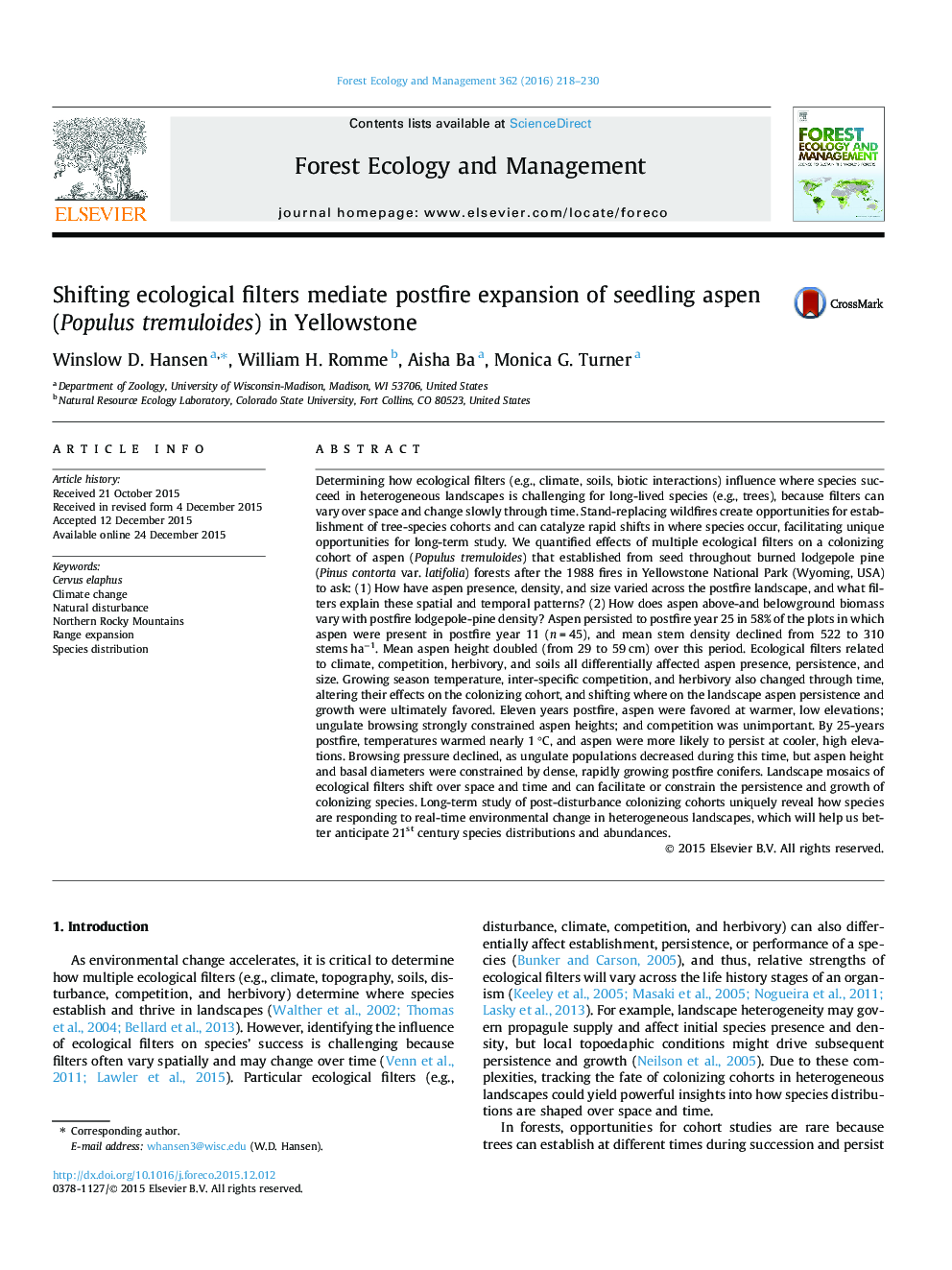| کد مقاله | کد نشریه | سال انتشار | مقاله انگلیسی | نسخه تمام متن |
|---|---|---|---|---|
| 85987 | 159155 | 2016 | 13 صفحه PDF | دانلود رایگان |

• Ecological filter effects on colonizing postfire seedling aspen were measured.
• Filters differentially affected aspen presence, persistence, and size over 25 years.
• Filters changed over time, altering their effects and shifting where aspen succeed.
• Landscape mosaics of filters facilitate or constrain colonizing species success.
• Long-term cohort studies will help us anticipate 21st century species distributions.
Determining how ecological filters (e.g., climate, soils, biotic interactions) influence where species succeed in heterogeneous landscapes is challenging for long-lived species (e.g., trees), because filters can vary over space and change slowly through time. Stand-replacing wildfires create opportunities for establishment of tree-species cohorts and can catalyze rapid shifts in where species occur, facilitating unique opportunities for long-term study. We quantified effects of multiple ecological filters on a colonizing cohort of aspen (Populus tremuloides) that established from seed throughout burned lodgepole pine (Pinus contorta var. latifolia) forests after the 1988 fires in Yellowstone National Park (Wyoming, USA) to ask: (1) How have aspen presence, density, and size varied across the postfire landscape, and what filters explain these spatial and temporal patterns? (2) How does aspen above-and belowground biomass vary with postfire lodgepole-pine density? Aspen persisted to postfire year 25 in 58% of the plots in which aspen were present in postfire year 11 (n = 45), and mean stem density declined from 522 to 310 stems ha−1. Mean aspen height doubled (from 29 to 59 cm) over this period. Ecological filters related to climate, competition, herbivory, and soils all differentially affected aspen presence, persistence, and size. Growing season temperature, inter-specific competition, and herbivory also changed through time, altering their effects on the colonizing cohort, and shifting where on the landscape aspen persistence and growth were ultimately favored. Eleven years postfire, aspen were favored at warmer, low elevations; ungulate browsing strongly constrained aspen heights; and competition was unimportant. By 25-years postfire, temperatures warmed nearly 1 °C, and aspen were more likely to persist at cooler, high elevations. Browsing pressure declined, as ungulate populations decreased during this time, but aspen height and basal diameters were constrained by dense, rapidly growing postfire conifers. Landscape mosaics of ecological filters shift over space and time and can facilitate or constrain the persistence and growth of colonizing species. Long-term study of post-disturbance colonizing cohorts uniquely reveal how species are responding to real-time environmental change in heterogeneous landscapes, which will help us better anticipate 21st century species distributions and abundances.
Journal: Forest Ecology and Management - Volume 362, 15 February 2016, Pages 218–230